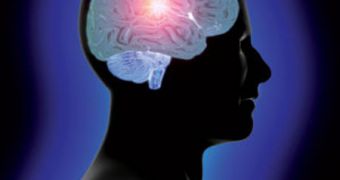A new scientific study conducted on people suffering from epilepsy may have just supplied scientists with the answer to one of the most difficult questions about the human brain, namely where does consciousness come from? Is it based in certain areas of the brain, or is it generated by the organ functioning as a whole? The new research seems to favor the second option, as the scenarists in charge of the investigation say that consciousness arises from the coordinated activity of the entire brain, and not from certain portions of the cortex.
The reason it has taken so long for experts to answer this question is a very simple one – there are numerous obstacles in getting the readings they have needed, and the best way to get them has been by implanting electrodes deep within a person's brain.
Obviously, for ethical reasons, scientists have had a hard time doing that, but now they have managed to combine both magnetic resonance imaging (MRI) and electroencephalograms (EEG) in the same brains. This has given them both a spatial and a temporal reading on it.
For the new study, Gif sur Yvette, France-based Institut National de la Sante et de la Recherche Medicale (INSERM) neuroscientist Raphael Gaillard and his team have taken advantage of the fact that they have had access to a group of ten individuals who have had electrodes implanted deep in their brain. These electrodes were normally used to treat drug-resistant epilepsy, but the researchers have managed to make them work in their favor and give up conclusive readings.
During the experiment, the scientists flashed images in front of the eyes of the participants for a period of time equal to roughly 29 milliseconds, which basically prevented the pictures from being consciously processed. They used menacing words, such as “kill” and “danger,” as well as neutral ones, such as “cousin” and “see.” Some of them were followed by a visual mask, a technique that obstructed them after the short period of time. Others were not masked, and could be consciously processed.
The first 300 milliseconds of the experiment were predictable, as in the test subjects' brains exhibited the same level of cortex activity in areas associated with consciousness and the lack thereof, which meant that they were not consciously processing the images. After this brief interval, their brain activity patterns changed, hinting at the fact that they were at that point aware of the pictures they saw. And the thing was that these patterns were visible all over the brain, which led to the conclusion of the study.
“Consciousness is more a question of dynamics, than of a local activity,” Gaillard says. “I'm thrilled by these results,” San Diego, California-based Neuroscience Institute expert Bernard Baars adds.

 14 DAY TRIAL //
14 DAY TRIAL //